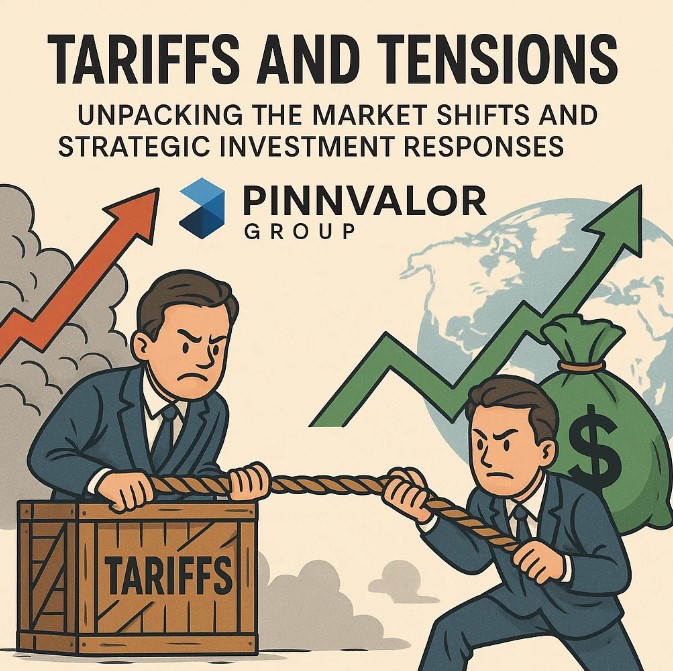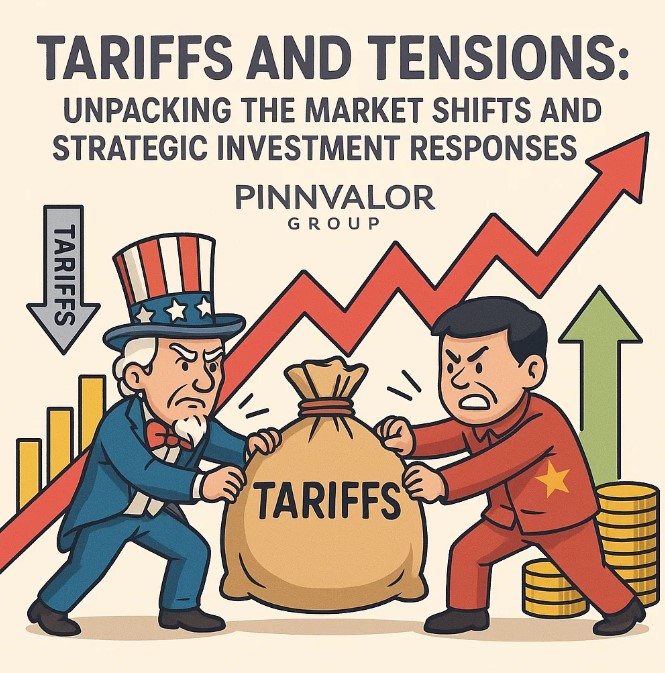
Tariffs and Tensions: Unpacking the Market Shifts and Strategic Investment Responses
In today’s increasingly interconnected global economy, tariffs have once again taken center stage as instruments of both economic policy and political leverage. As governments erect new barriers to trade under the banner of protecting domestic industries or asserting geopolitical influence, investors and businesses are left to navigate a complex and often volatile landscape. This blog explores how recent tariff actions are influencing market dynamics and reshaping investment strategies across the globe.
"Are global tariffs reshaping your investment playbook—or leaving you exposed to hidden risks?"
In the age of economic nationalism, market agility isn’t optional—it's essential. Supply chains realign, sectors rotate, and only the adaptive thrive.
Understanding Tariffs in a Global Context
Tariffs are essentially taxes imposed on imported goods. While they can serve a range of purposes—from shielding domestic industries to addressing trade imbalances—they often carry broader economic repercussions. In the short term, tariffs can disrupt supply chains, alter pricing structures, and strain international relations. In the long term, they may lead to realignments in global trade flows and investment priorities.
Recent examples include:
- U.S.-China Trade Tensions: A series of tit-for-tat tariff increases on billions of dollars’ worth of goods, impacting industries from technology to agriculture.
- EU-UK Post-Brexit Adjustments: Tariff and non-tariff barriers affecting trade volumes and investment sentiment.
- U.S.-Mexico Automotive Tariffs (Proposed): Influencing supply chain decisions in North America.
How Tariffs Shift Market Dynamics
1. Price Volatility and Inflationary Pressures
Tariffs often lead to higher costs for imported goods, which can translate into increased prices for consumers and businesses. This can fuel inflation, forcing central banks to tighten monetary policy—affecting interest rates, borrowing costs, and investment returns.
Example: Tariffs on steel and aluminum raise costs for automakers and construction firms, which may pass those costs on to consumers or absorb them through lower margins.
2. Supply Chain Disruptions and Realignments
Businesses heavily reliant on international supply chains may be compelled to rethink sourcing strategies. This could lead to:
- Diversification of suppliers
- Nearshoring or reshoring of production
- Increased investment in automation to offset rising costs
Impact: These shifts often create winners and losers across sectors and geographies.
3. Sectoral Impacts
Some sectors are more vulnerable than others:
- Technology: Components sourced globally make this sector highly sensitive to tariffs.
- Agriculture: Retaliatory tariffs often target this politically sensitive industry.
- Manufacturing: Especially exposed due to its dependence on raw materials and intermediate goods.

Strategic Investment Responses
1. Geographic Diversification
Investors are increasingly looking beyond traditional markets to hedge against region-specific risks. This includes:
- Emerging markets with favorable trade terms
- Economies with diversified trade portfolios
- Countries entering new trade agreements (e.g., CPTPP, RCEP)
2. Sector Rotation
Shifting exposure from tariff-vulnerable sectors to more insulated ones is a key strategy. For instance:
- From manufacturing to services or healthcare
- From global exporters to domestically focused businesses
3. Hedging Currency and Commodity Risks
Currency volatility often accompanies trade tensions. Investors can:
- Use currency-hedged ETFs
- Trade in commodities that benefit from supply shocks (e.g., gold, rare earth metals)
4. Private Equity and Alternative Assets
Tariff-induced uncertainty may push investors toward less liquid, longer-term assets that are less sensitive to market swings:
- Infrastructure
- Real estate
- Private equity investments in domestic-focused firms
Policy Outlook and Investor Sentiment
Investor sentiment is often shaped not just by tariff announcements but by the underlying political climate and the credibility of enforcement. Markets react swiftly to:
- Escalations or de-escalations in trade negotiations
- Legal challenges to tariff regimes
- Shifts in leadership or geopolitical alliances
Forward-looking strategies should include scenario planning and frequent re-evaluation of geopolitical risks.
Conclusion: Navigating an Uncertain Future
Tariffs and trade tensions are no longer isolated events; they are part of a broader reshaping of the global economic order. For investors, the key lies in adaptability—understanding the ripple effects across markets, reassessing risk exposure, and aligning portfolios with long-term trends rather than short-term shocks.
As the world navigates these crosscurrents, successful investment strategies will require a nuanced understanding of both macroeconomic forces and the microeconomic realities of specific industries and geographies.
Are you adjusting your investment strategy in response to global trade shifts? Let us know your thoughts in the comments.
